-
FREE MEMBER
NO Posting or PM's Allowed

A new purchase and a couple of New Zealand related questions.
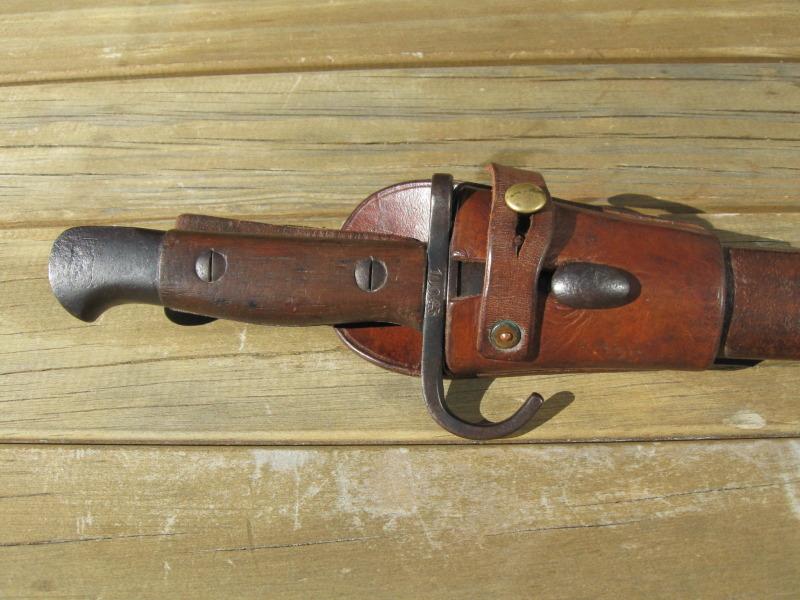

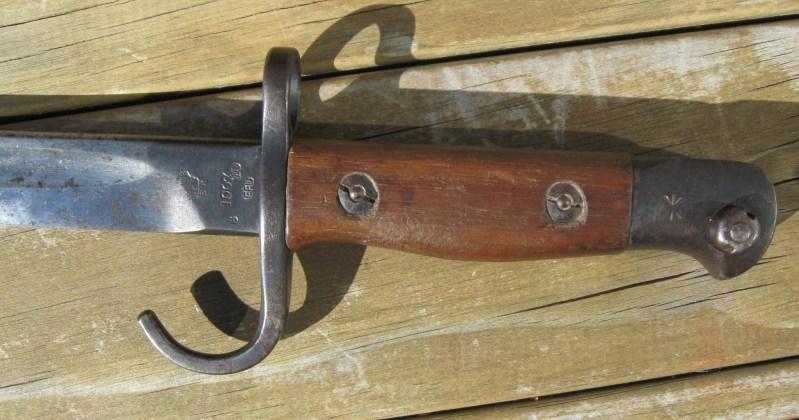
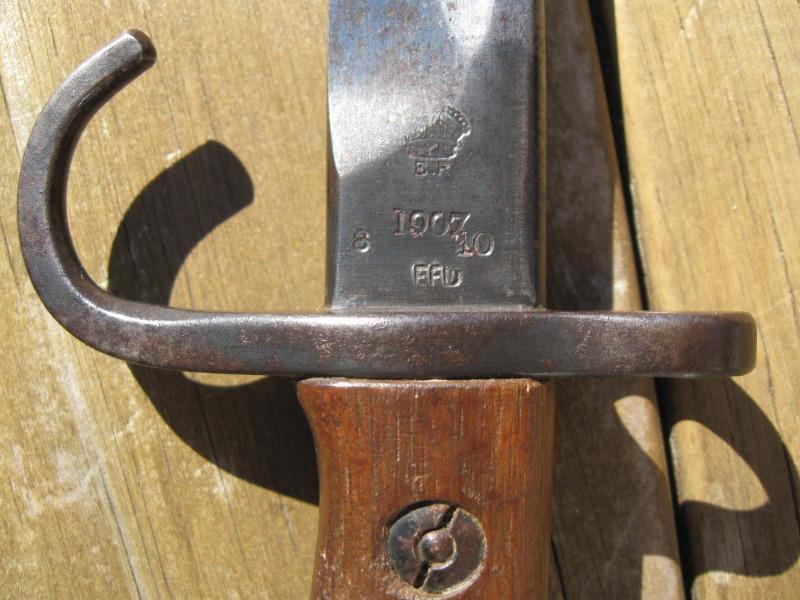
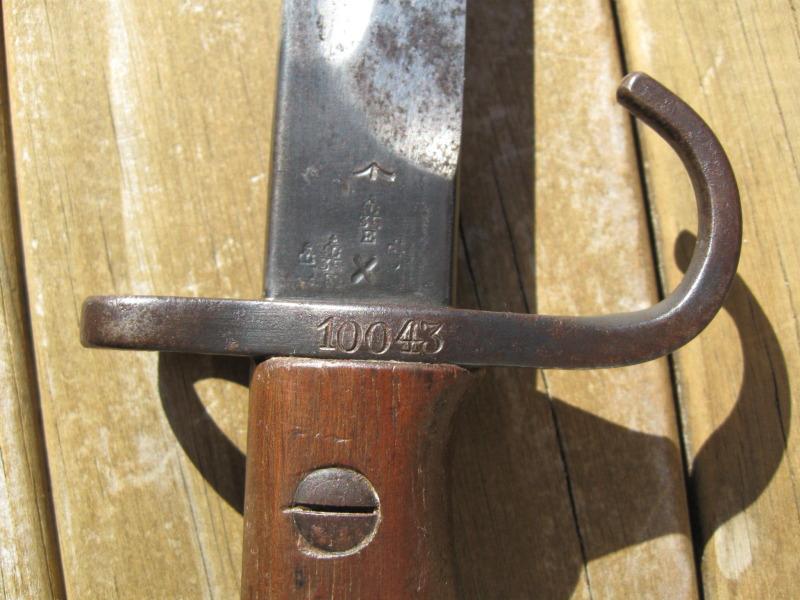
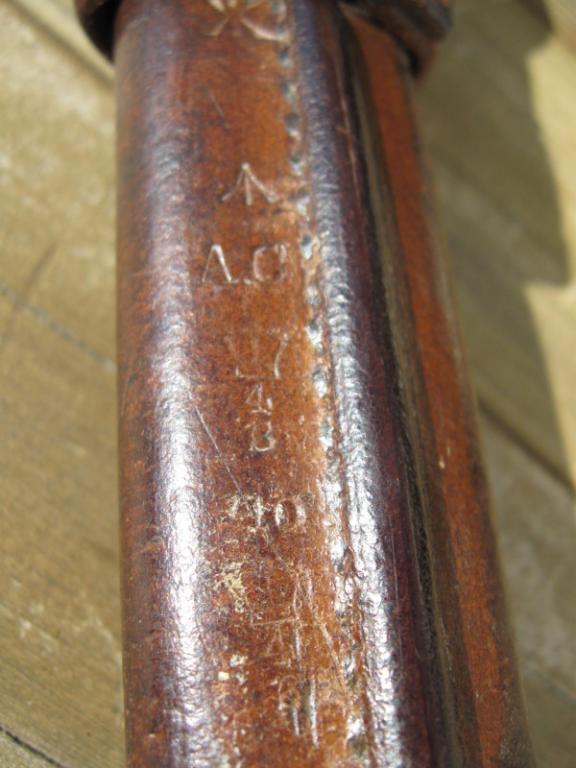

Well here's something that came with a story.
Supposedly this was bought back by a Kiwi soldier from Gallipoli.
Now I always buy the object not the story,and that's exactly what I have done in this case.
However having researched the said chap there was indeed a Kiwi gentleman of that name who served at Gallipoli.
I think its indeed probable this bayo did belong to him,but perhaps more likely bought by him privately sometime after the war rather than bought back.
Which brings up the question,could returning Kiwi soldiers (both Wars) in fact keep/purchase their weapons if they wished?
If they could would they have sold out of service marks applied,as this bayo has?
What was the procedure for returning soldiers,did they still carry their arms off the boats to be collected later or were they collected on the boat before disembarking?
Its not the first time I have come across rifles etc that were supposedly carried by some chaps grandfather or other,but unfortunately without provenance its just a nice story.
Sometimes however there are ways of disproving these one way or another with a little detective work.
Oh,one more thing,the frog (which did not come with it) I am told is a specific NZ pattern,can someone confirm this?
pattern,can someone confirm this?
Cheers,
GDU
Information
 |
Warning: This is a relatively older thread
This discussion is older than 360 days. Some information contained in it may no longer be current. |
|
-
03-13-2011 01:32 AM
# ADS
Friends and Sponsors

-
Legacy Member

I think the 'X' marking is a bend test proof, not a sold out of service mark:
http://www.radix.net/~bbrown/brit_bayo.html
Nature and nature's laws lay hid in night;
God said "Let Newton be!" and all was light.
-
-
-
Nice bayonet, The mark on the pommel is the sold out of service, the X on the blade (Ricasso) is the bend mark.
Regarding the frog etc, I would go to the edged weapons forum, a few experts on there will help you out.
Last edited by bigduke6; 03-13-2011 at 04:25 AM.
-
-
Legacy Member


Originally Posted by
bigduke6

The mark on the pommel is the sold out of service, the X on the blade (Ricasso) is the bend mark.
Must get that eye test booked...
Nature and nature's laws lay hid in night;
God said "Let Newton be!" and all was light.
-
-
FREE MEMBER
NO Posting or PM's Allowed

Nice bayonet, seems to have been a lot of enfeild bayonets that came back to AUS and NZ after the war to end all wars, I have one Enfield nearly the same but with NSW stamped on it with the serial number. I have seen quite a few of recent enfield bayonets which are more common but the Lithgow is more of a rare beast as just about all the quillions on them were cut off. As to the frog it appears more of an earlier pattern IE boer war or the british WW1 webbing for Kitcheners Army. as some one said previously though try the edged weapons forum as they would be able to shed more light on it. This i would also be interested in.
is more of a rare beast as just about all the quillions on them were cut off. As to the frog it appears more of an earlier pattern IE boer war or the british WW1 webbing for Kitcheners Army. as some one said previously though try the edged weapons forum as they would be able to shed more light on it. This i would also be interested in.
Regards
Fergs
-
Legacy Member


Originally Posted by
GDU

What was the procedure for returning soldiers,did they still carry their arms off the boats to be collected later or were they collected on the boat before disembarking?
Its not the first time I have come across rifles etc that were supposedly carried by some chaps grandfather or other,but unfortunately without provenance its just a nice story.
I have a copy of Somme Mud, an autobiography of an Australian soldier named E.P.F. Lynch. On page 318 he writes "It's early April 1919. The cold winter is giving way to spring. We're still at Nalinnes, but our equipment has been handed in and we are on a draft due to leave for England
soldier named E.P.F. Lynch. On page 318 he writes "It's early April 1919. The cold winter is giving way to spring. We're still at Nalinnes, but our equipment has been handed in and we are on a draft due to leave for England any day now."
any day now."
-
-

Originally Posted by
peregrinvs

Must get that eye test booked...

Thought that was the case,
-
-
FREE MEMBER
NO Posting or PM's Allowed

THe sold from service mark on a quillioned blade is always intersting as all quillions were removed in 1916 - or were supposed to be - and it woudl seem very strange for someone to sell blades from service during the war, or so soon after it was introduced to service. One can always assume that this markign is actually post WWII and came from a rear echelon unit that didnt remove the quillion, or stock sitting in stores that never got issued. Don't suppose the story will every be learnt
As for the frog yes it is New Zealand bookmark
bookmark
Last edited by old-smithy; 03-13-2011 at 09:14 AM.
-
It used to be an absolute offence to possess government stores, indicated by the big WD arrow. So poeople that had previously 'liberated' or 'diverted' or just plain stolen some of this kit took it upon themselves to mark it with an extra arrow to make the 'sale-mark' of two face-to-face arrows look genuine.
The old Army equipment regulations contained a whole chapter explaining how to tell the real thing but it was of little use because mere possession ceased to be an offence. So anyone with such a marked bit of kit soon learned that the best thing was to say to anyone silly enough to investigate too deeply was simply say words to the effect that '........ if you think that it's stolen, then you prove I stole it. Possession isn't an offence so I don't have to prove anything'
Just a thought................ but I think that bayonet slipped out of the gate
But unmodified bits of kit does tend to stay the course for many years. For example, unmodified British L1A1 and 2 bayonets (without the deeper catch recess) were still on the shelves and in Ordnance stockpiles for many many years, well into the early 70's
L1A1 and 2 bayonets (without the deeper catch recess) were still on the shelves and in Ordnance stockpiles for many many years, well into the early 70's
Last edited by Peter Laidler; 03-13-2011 at 11:39 AM.
-
Thank You to Peter Laidler For This Useful Post:
-
FREE MEMBER
NO Posting or PM's Allowed

The 'sold out of service' mark in this case does not mean it was marked when leaving service. I believe this mark indicates it has been sold out of British service and into colonial (or NZ.?) service.
service and into colonial (or NZ.?) service.
I have a number of British made quillon bayonets of that era that have this mark, and most have WW1 Australian marks present as well. I have also seen pre-war scabbards with WW1 Lithgow repairs done.
marks present as well. I have also seen pre-war scabbards with WW1 Lithgow repairs done.
Equipment was being sent to the 'colonies' during that 1910 period and it was being marked with the SOS arrows. Much of this equipment ended up going back to Europe again with the troops to serve in the war.
The Sanderson example pictured below is interesting as it has been 'sold out of service', marked with Aussie MD ownership marks, had its hook removed during the war, but has never had the clearance hole drilled.
pattern,can someone confirm this?






















 Register To Reply
Register To Reply













